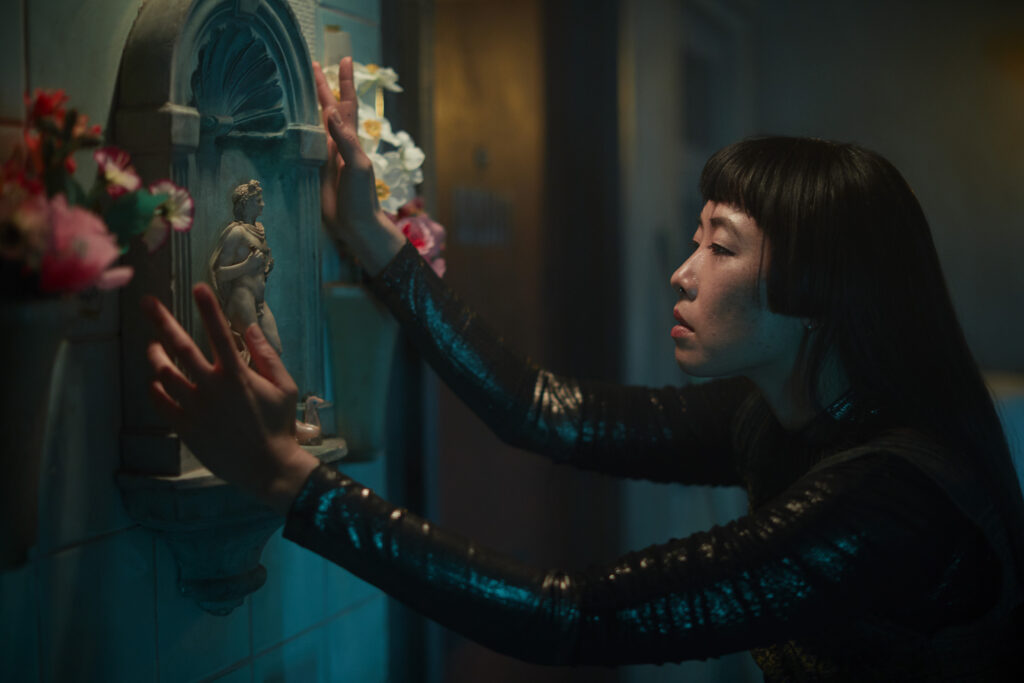
“Much-anticipated” is a phrase that is often recklessly bandied about in theatreland. West End debut of an American film star who is more used to staring at green screens than footlights? “Much-anticipated.” A revival of a play that was once raved about by critics now dead, retired or residing in the blogosphere? “Much-anticipated.” Anything featuring Benedict Cumberbatch? “Much-anticipated.”
After nine long years, Punchdrunk returns to London with a new production. They’ve not been idle, having launched mega-shows elsewhere around the globe in New York and Shanghai as well as projects closer to home like the Punchdrunk Enrichment programme for children and opening Fallow Cross, a research and development space in Tottenham Hale.
Whereas their last production The Drowned Man sought to pierce the facile facade of Twenties Hollywood, this latest adventure takes us somewhere much deeper into a world that had remained hidden for thousands of years before Heinrich Schliemann discovered it in modern-day Turkey.
Schliemann was by all accounts a nineteenth-century Elon Musk. In his late twenties, the German businessman made his first fortune by opening a bank and buying and selling gold dust in California; in just six months, he bought and sold over a million dollars worth of the precious material. He sold off his business and then made a handy profit trading indigo dye and then another fortune as a military contractor to the Russian government during the Crimean War. In 1858, at the age of 36, he was ready to retire and set his sights on his lifetime ambition to find the lost city of Troy. It took him over a decade and the help of English amateur archaeologist and local expert Frank Calvert before in 1870, he decided to dig at Hissarlik.
Why is all that important? It was Schliemann who named what he found of Troy “The Burnt City” and, like him, we dig down through the various layers of physical architecture and the stories that were hidden for thousands of years. To say that Punchdrunk have done a superlative job in recreating the experience of wandering through a lost metropolis goes without saying but the level of detail is as epic as the tale of Troy, its final battle and the stories behind the men and women who fought in it. Everywhere you look, there is something which usually means far more than it did at first glance – or nothing at all. We advise reading everything that you can while in there and maybe even brushing up on your Linear B.
Those who haven’t been to Punchdrunk should know a little of what to expect in order to set expectations. The experience lasts around three hours (much of it will be walking) and it is best to go as lightly dressed as possible. You’ll be given white masks to wear while you’re there (these don’t always fit well over glasses) and you will be asked to lock away your mobile phone in a bag you sling around your shoulder. There is an obligatory trip through a museum which examines Troy and Schliemann’s discovery. There are very few clues about what to do once you get into the main arena so be prepared to investigate and follow the actors or your nose. Bathrooms and a bar can be found in the main area and there are plenty of staff around who can assist should you have an emergency but don’t expect them to help you with your own discovery of The Burnt City.
This review will deliberately not contain details of any theatrical happenings within the show? Why? First off, there is no way that any reviewer can see everything that happens here, so vast is the space and so numerous the different individual events. Unlike seeing a play where everything is laid out on a stage, The Burnt City is operates across many different rooms and areas and it would be unfair to judge the theatrical merits of the whole show without seeing the whole show. The second is because it is very hard to do so without spoiling the experience for people who have never been.
What can be said is that this is an experience on multiple levels, both literally (prepare to climb steps to see an upper floor) and metaphorically. The journey starts in Troy but you may be lucky enough to find the entrance to another building which will allow you to explore the battlefield of Mycenae and all that happened there. The narrative – as exposed through documents seen in the offices and meeting rooms – suggest the show’s creators have something deeper in mind than pure historical adventuring (clue: look for references to Chapman in the museum and elsewhere).
Personally, we found The Burnt City to be equally fascinating and disappointing. While there is no shortage of well-executed drama on display, it felt less like “immersive theatre” and more like “tapas theatre”, small chunks of drama either doled out at the beginning after which its served up randomly when exploring or piecemeal by following an actor around the building. Due to its size, there is a lot more walking around than previous Punchdrunk shows and, consequently, you see less theatre and miss out on more theatre with a very real chance of not seeing some of the more thrilling arcs or even the world outside Troy (the city you start off in).
Would we see this again? Definitely, if only to check out all those things we missed out the first time around. Would we recommend this to people who will only go once? Maybe, but we advise them to do some reading up beforehand to get the most of the experience.
